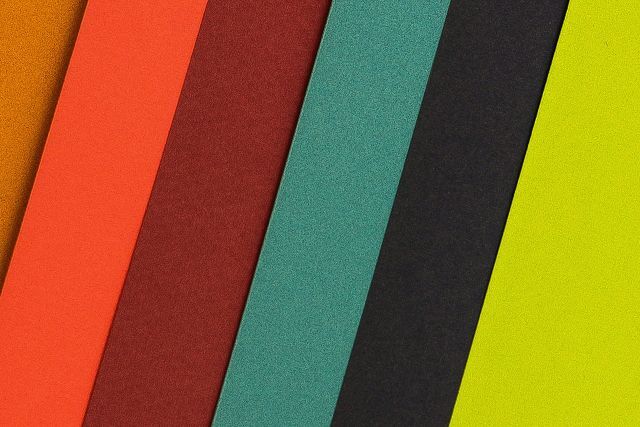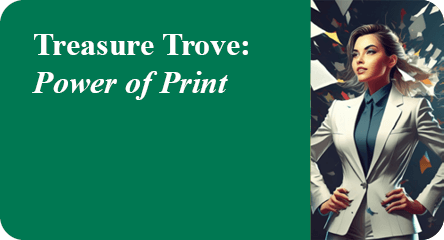
When you think about the history of the Twin Cities, paper has long been the go-to substrate for everything from packaging to business cards to banners. Recent technology advances have resulted in new, innovative printing substrates that can take your marketing materials to stunning new levels. At Minuteman Press Uptown, we're excited to explore these cutting-edge options with our clients.
Let's dive into the world of alternative printing substrates and discover how they can elevate your brand and captivate your audience.
The Limitations of Traditional Paper
While paper remains a versatile and cost-effective option for many printing needs, it does have its limitations. Paper is susceptible to water damage and may not stand up well to frequent handling or outdoor conditions. Moreover, in a world where consumers are bombarded with marketing messages, traditional paper materials might not always make the impact you're looking for.
Enter Alternative Substrates
Alternative substrates offer a world of possibilities for creating unique, durable, and attention-grabbing print materials. Here are some exciting options to consider:
Synthetic Papers
Synthetic papers are made from plastic materials like polyethylene or polypropylene. They offer several advantages over traditional paper:
- Water-resistant and tear-resistant
- Durable and long-lasting
- Can be used in extreme temperatures
- Available in various thicknesses and finishes
Synthetic papers are ideal for menus, outdoor signage, maps, and any materials that need to withstand frequent handling or exposure to the elements.
Metal
Printing on metal creates a sleek, modern look that can make your materials stand out. Options include:
- Aluminum: Lightweight and corrosion-resistant
- Stainless Steel: Durable and sophisticated
- Brass or Copper: For a vintage or luxurious feel
Metal printing is perfect for high-end business cards, signage, awards, and decorative pieces.
Wood
Wood printing adds a natural, organic feel to your materials. It's great for:
- Business cards
- Invitations
- Point-of-sale displays
- Artistic prints
Different types of wood can be used, each with its unique grain and color, allowing for truly one-of-a-kind prints.
Fabric
Printing on fabric opens up a world of possibilities for soft signage, trade show displays, and wearable marketing materials. Options include:
- Cotton
- Polyester
- Canvas
- Silk
Fabric printing is ideal for banners, flags, tablecloths, and even custom-printed clothing.
Glass
Printing on glass creates a sophisticated, high-end look. It's perfect for:
- Signage
- Awards
- Decorative pieces
- Window displays
Glass printing can be done using various techniques, including etching and UV printing, to create stunning visual effects.
Acrylic
Acrylic is a versatile substrate that can be used to create modern, sleek prints. It's great for:
- Signage
- Display stands
- Awards
- Photo prints
Acrylic can be clear or colored, and can be cut into various shapes for unique designs.
Vinyl
Vinyl is a durable, flexible substrate that's perfect for large-format printing. It's commonly used for:
- Vehicle wraps
- Floor graphics
- Wall decals
- Outdoor banners
Vinyl can be easily applied to various surfaces and removed without leaving residue, making it ideal for temporary or changeable graphics.
Magnets
Magnetic substrates allow you to create removable, reusable prints that can stick to metal surfaces. They're great for:
- Refrigerator magnets
- Vehicle signage
- Changeable menu boards
- Trade show displays
Magnetic prints offer the flexibility to easily update information or change out graphics as needed.
Biodegradable Materials
For environmentally conscious businesses, there are several biodegradable substrate options:
- Stone paper: Made from calcium carbonate and non-toxic resin
- Seed paper: Embedded with plant seeds that can grow when planted
- Biodegradable plastics: Break down naturally over time
These eco-friendly options are perfect for businesses looking to reduce their environmental impact while still creating impactful marketing materials.
The Impact of Innovative Substrates
Using alternative substrates can have a significant impact on your marketing efforts:
- Increased Attention: Unique materials stand out in a sea of traditional paper marketing materials, capturing attention and increasing engagement.
- Perceived Value: High-quality, innovative substrates can enhance the perceived value of your brand and offerings.
- Memorability: Unusual or tactile materials are more likely to be remembered by recipients, increasing brand recall.
- Durability: Many alternative substrates offer increased durability, ensuring your marketing materials last longer and continue to make an impact.
- Versatility: With such a wide range of substrates available, you can create marketing materials tailored to specific environments or use cases.
Choosing the Right Substrate for Your Project
When selecting a substrate for your print project, consider the following factors:
- Purpose: What is the intended use of the printed material? Will it be indoors or outdoors? Does it need to be durable or water-resistant?
- Brand Image: Does the substrate align with your brand's image and values? For example, a high-end fashion brand might opt for metallic or fabric substrates, while an eco-friendly company might choose biodegradable options.
- Budget: Alternative substrates can be more expensive than traditional paper. Consider the balance between cost and impact when making your decision.
- Print Run: Some substrates are more cost-effective for large print runs, while others are better suited for small, high-impact projects.
- Design: Certain substrates may limit color options or require specific design considerations. Consult with your printer to ensure your design will translate well to the chosen substrate.
- Longevity: If you need your prints to last for an extended period, choose a substrate that can withstand the test of time and environmental factors.
The Printing Process
Printing on alternative substrates often requires specialized equipment and techniques. At Minuteman Press Uptown, we use state-of-the-art printing technology to ensure high-quality results on a wide range of substrates. Some common printing methods for alternative substrates include:
- UV Printing: Uses ultraviolet light to dry or cure ink as it's printed, allowing for printing on non-porous surfaces like metal, glass, and plastic.
- Dye-Sublimation: Ideal for fabric printing, this process uses heat to transfer dye onto materials.
- Direct-to-Substrate Printing: Allows for printing directly onto rigid materials like wood, metal, and acrylic.
- Latex Printing: Uses water-based inks that are suitable for a wide range of substrates, including vinyl and fabric.
Conclusion
As we've explored, the world of print substrates extends far beyond traditional paper. By embracing innovative materials, you can create marketing materials that not only convey your message but also leave a lasting impression on your audience. Whether you're looking for durability, eco-friendliness, or sheer visual impact, there's an alternative substrate that can meet your needs.
At Minuteman Press Uptown, we're committed to helping our clients push the boundaries of what's possible in print. Our team of experts can guide you through the process of selecting the perfect substrate for your project and ensure that the final product exceeds your expectations.
So, the next time you're planning a print project, think beyond paper. Explore the exciting world of alternative substrates and discover how they can transform your marketing materials from ordinary to extraordinary. Your brand - and your bottom line - will thank you for it.

